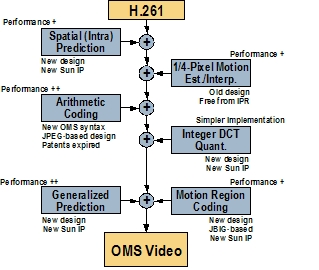Is "working on it" just open source FUD?


It even has a name. Open Media Stack. Part of the Open Media Commons initiative. Oh, it's royalty free. Look, here's a blog post. And a news release. (And a diagram, from the blog post.)
The way to get to a royalty-free codec is to start with H.261, a video compression standard approved in 1989, outside the 17-year patent window. They can't look at H.264 (used in MPEG4) because that requires payment of royalties.
So we go back a full human generation and grow from there. Probably with Xith Vorbis.
All of which sounds wonderful, except for one thing. Who's paying for all this work?
Sun indicates it's contributing, but how long will it take for them to replicate 20 years of codec progress on its own? And who is helping?
Asked all these interesting questions at last week's Open House Rob Glidden, global alliance manager for TV & Media at Sun, made an unintentioned funny. "Stay tuned," he said.
Smells like open source FUD to me.
Now wait, you say. Unfair, you say. Great projects start with a vision and a sponsor. Here Sun is offering both. Plus a structure in which to get it done.
I would be far less skeptical and snarky on this if, say, Google were making the announcement. They have the money and bodies to get this done lickety-split.
I'm just afraid that with Sun we might be talking more Lemony Snicket.